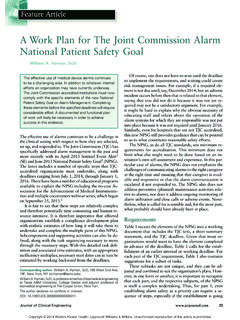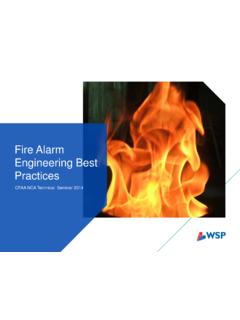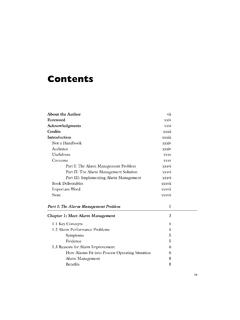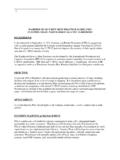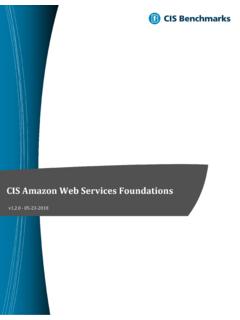Transcription of Impact of Clinical Alarms on Patient Safety
1 Impact of Clinical Alarms on Patient Safety 2006 ACCE Healthcare Technology Foundation. All rights part of this document may be reproduced by any means or transmitted into a machine language without written permission of the publisher. Published by ACCE Healthcare Technology Foundation. Plymouth Meeting, PA, Force Members: Co-chair: Tobey Clark, MS, CCE, Director, Instrumentation & Technical Services, University of Vermont Co-chair: Yadin David, PhD, Director of the Biomedical Engineering Department, Texas Children s Hospital Matt Baretich, PE, PhD, President, Baretich Engineering Thomas Bauld, PhD, Technology Manager, Riverside Health Systems, ARAMARK/CTS Dave Dickey, CHC, Corp. Dir. Clinical Engineering, McLaren Healthcare Corporation Izabella A.
2 Gieras, MS, MBA, Clinical Engineering Manager, Beaumont Services Company Jeff Heyman, Senior Project Engineer, ECRI William Hyman, PhD, Professor, Biomedical Engineering, Texas A&M University Bruce Hyndman, Director of Engineering Services, Community Hospital of the Monterey (CA) Peninsula Ode Keil, MBA CCE, Dir. of Quality management , Provena Mercy Medical Center James Keller, Vice President, Health Technology Evaluation and Safety , ECRI Alan Lipschultz, PE CCE CSP, Director, Clinical Engineering, Christiana Care Health Services Saul Miodownik, MEE, CCE, Director, Clinical Engineering, Memorial Sloan-Kettering Cancer Center Wayne Morse, MSBME, CCE, FACCE, President, Morse Medical, Inc. Jennifer Ott, CCE, Director Clinical Engineering, St.
3 Louis University Hospital Bryanne M. Patail, BS, MLS, FACCE, Biomedical Engineer, US Department of Veterans Affairs, National Center for Patient Safety Marvin Shepherd, PE, President DEVTEQ2 FOREWORDL eaders in healthcare technology management and Safety established the American College of Clinical Engineering Healthcare Technology Foundation as a private not-for-profit 501c3 organization in late 2002 in order to accelerate deployment of safer healthcare technologies, educate the public and to promote best practices in the field of Clinical vision of the Foundation is to improve healthcare delivery by promoting public awareness of, and the development and application of, safe and effec-tive healthcare technologies through the global advancement of Clinical engineering research, education, practice and other related activities.
4 The Foundation s commitment to involve users, Clinical engineers, regulators, together with its strong rela-tionship with the medical device manufacturing industry, and with the mission to reach out to the public ultimately translates into better-educated community, and thus safer and more efficient healthcare delivery. As a catalyst for the advance-ment of better and safer Clinical technology, the Foundation supports several initiatives including better understanding of the challenging issues associated with the effectiveness of Clinical 2004, the Foundation established the Clinical Alarms improvement project with the goal of collect-ing and sharing information related to the perception of care providers and engineers about the Impact of Clinical Alarms in the equipment they are working with.
5 The project team leader, Mr. J. Tobey Clark, CCE assembled a task force that was responsible for the data collection and preparation of this report. The task force developed the survey tool that was used in both live forums as well as through an internet appli-cation to collect data from 1,327 care givers and engineers. The results of this survey, conducted between August 2005 and January 2006, was inte-grated with an analysis of data available within the Food and Drug Administration and ECRI databases. This report is offered as to facilitate the improvement of alarm design, the user interface, alarm uniformity and user education. It is the intention of the ACCE Healthcare Technology Foundation to share this information and highlight the opportunities to improve all aspects of Clinical alarm Foundation would like to extend its appreciation to all who contributed and assisted in bringing this important project to completion; especially to J.
6 Tobey Clark, Marvin Shepherd, Bruce Hyndman, William Hyman and Yadin David, and to acknowl-edge the collaboration of Jeff Heyman and Jim Keller of ECRI in the writing of the Alarms warn caregivers of immediate or potential adverse Patient conditions. Alarms must be accurate, intuitive, and provide alerts which are readily interpreted and acted on by clinicians in an appropriate fashion. Clinical Alarms and their short-comings have been the topic of numerous studies and analysis in the literature. The Joint Commission on the Accreditation of Healthcare Organizations (JCAHO) established a National Patient Safety (NPS) goal in 2002 to improve the effectiveness of Clinical Alarms . This goal was removed for hospital organizations in 2004 and incorporated into the JCAHO standards.
7 Despite the technological and healthcare improvements related to efforts to meet the NPS goal, adverse Patient events continue to occur related to alarm system design and perfor-mance, care management and the complexity of the Patient care environment. In 2004, the ACCE Healthcare Technology Founda-tion started an initiative to improve Clinical Alarms . This paper reviews the literature related to Clinical alarm factors and analyzes adverse event data-bases. Efforts to improve Alarms through technological, standards, and regulatory means are reviewed and evaluated. Forums, meetings and a survey of 1,327 clinicians, engineers, technical staff and managers provided considerable feed-back regarding alarm issues.
8 Of particular value is the response from nursing who represented the majority of the respondents to the survey. Observa-tions and recommendations have been developed to improve the Impact of Clinical Alarms on Patient Safety . Future directions are aimed at awareness, a focused effort towards the reduction of false Alarms , and soliciting all constituents involved in Clinical Alarms to meet and develop action plans to address key issues. Keywords: Equipment Alarm Systems; Medical Device Safety ; Monitoring, Physiological; Patient Care management , Clinical Engineering4 INTRODUCTIONA larms on Clinical devices are intended to call the attention of caregivers to Patient or device condi-tions that deviate from a predetermined normal status.
9 They are generally considered to be a key tool in improving the Safety of patients . The purpose of alarm systems is related to communicating infor-mation that requires a response or awareness by the operator. 1 In some cases the normal conditions are preset in the device, while in others the correct use of the device requires directly setting the parameter limits. The user often has the ability to turn the Alarms on or off, and to set the volume of the audible alarm output. Alarm information may also be transmitted away from the bedside to a remote location that can be down the hall, or at some distance away. Such transmission may also be disabled, either intentionally or inadvertently.
10 When an alarm is triggered the caregiver is tasked with noting the alarm, identifying its source, and responding appropriately. Effective alarm setting, noting and responding is a design, user, and systems issue. From the design perspective Alarms should be easy to set, their status ( on/off, limit values) should be easily determined if not directly visible, and the identification of and specificity of a triggered alarm should be unambiguous and easy to determine. The alarm system must also be designed for all intended environments of Patient care. From the use perspective, users must be adequately trained, and the number of staff must be suitable to the setting and the number of patients . However, it is widely recognized that training is not itself a suitable or effective cure for poorly designed and overly challenging equipment.
